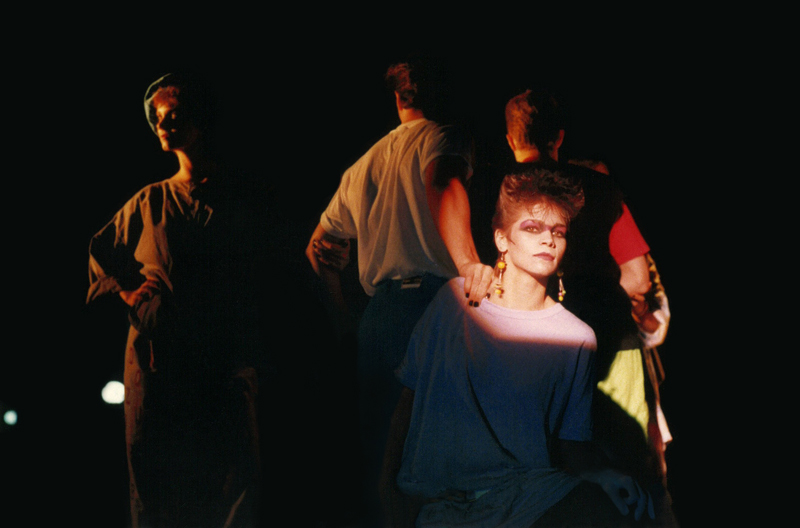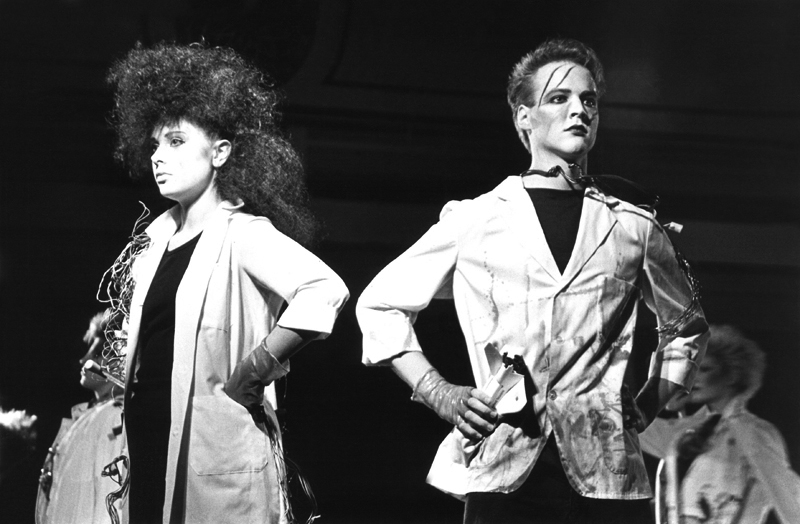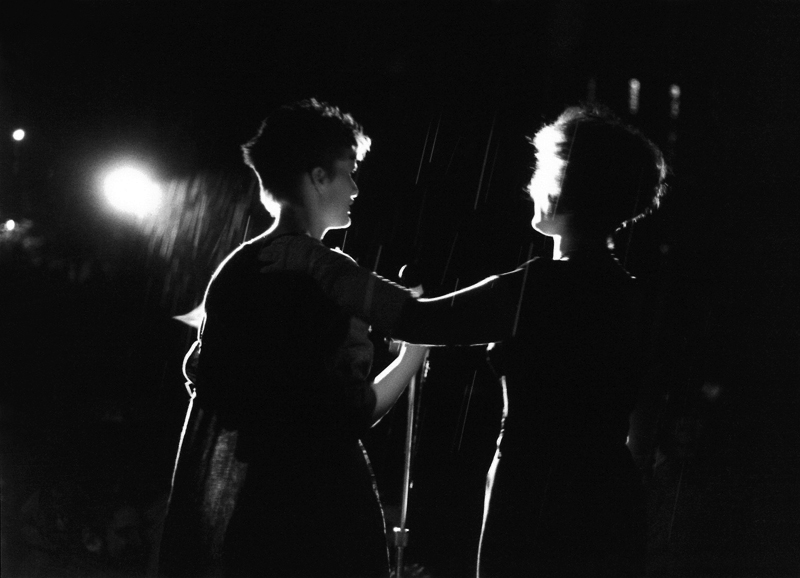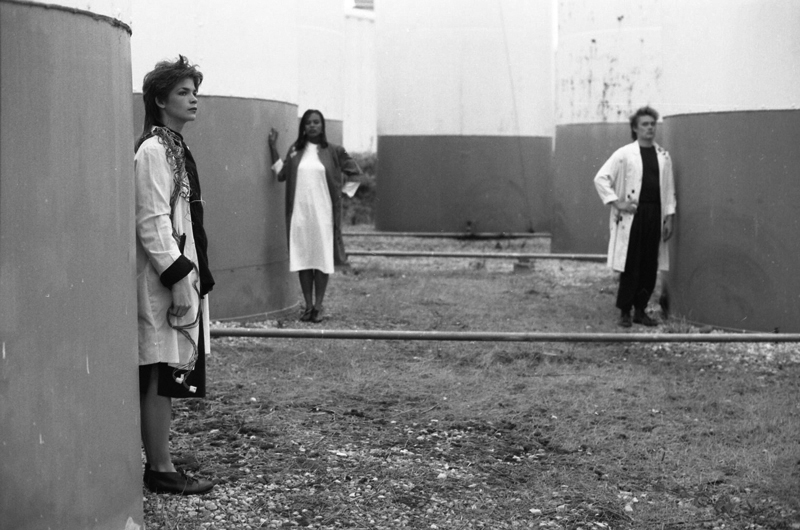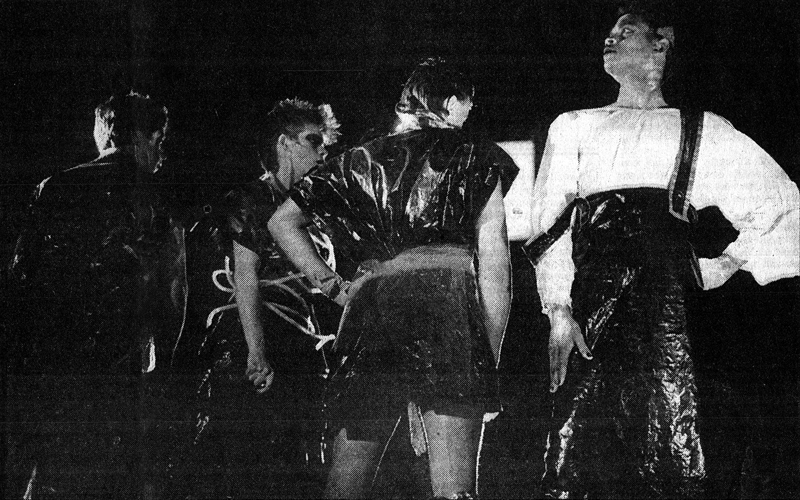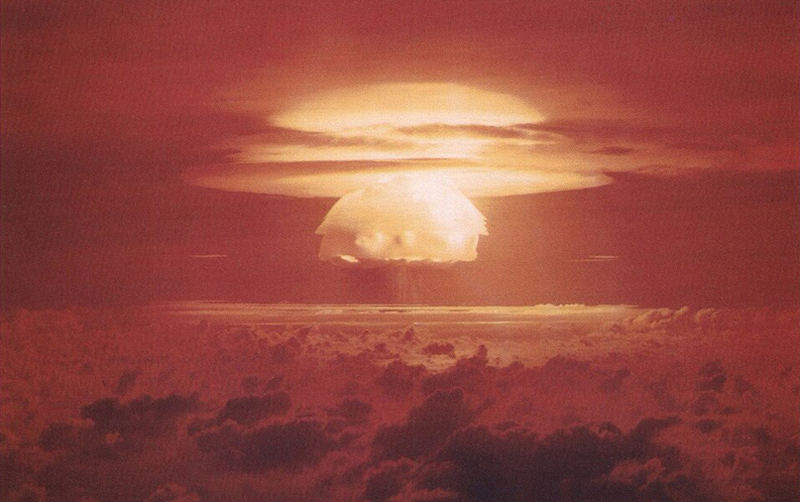Library Mall, University of Wisconsin, Madison – April 25, 1985 (Image: Lewis Koch)
Fashion for the Nuclear Age
"Fashion for the Nuclear Age" attempts to alert people to the danger of nuclear war through the medium of the fashion show. It tries to reach an audience which conventional forms of nuclear education - films, lectures, etc. - do not ordinarily reach. While in no way minimizing or making light of the danger it describes, it is also entertaining to watch and humorous at times.
The show is divided into two parts - pre and post nuclear blast fashions. The pre-blast collections begin with what people might actually be wearing in 1985-86 and become increasingly militarized, suggesting large scale military mobilization. In the scientific collection - choreographed to the theme of "Star Wars" - white-coated lab technicians play with small bombs and bright colored slinkies. The final pre-blast collection, the "military evening collection," suggests heights of military decadence (much as in the Weimar Republic, in pre-WWII Germany.)
The blast is followed immediately by the "burnt collection", which depicts the immediate post-blast effects. The models no longer strut, but stumble in a daze, their clothing burnt, their faces and limbs glowing with fluorescent makeup to suggest irradiation. The "bandaged collection" is more of a wry commentary: the music is upbeat - "Fashion play your part" - while clothing and bodies are covered with bandages and blood. Some humor is provided in the "executive" and "vigilante" collections. In the "executive collection" the top executive, dressed as a cowboy, is accompanied by his aides in their bunker to "Here come cowboys...here to save the world." In the "nuclear winter collection" all of the clothing is silver and blue. The models walk painfully - shivering and trying to protect themselves from the cold. The soundtrack "How winter kills" - like that in "body-bag #1 "War...what is it good for...absolutely nothing:" - suggests what a waste of humanity a nuclear war would be. There would be no survivors. In the final collection "The body-bag as the last word in fashion," taps is played. All of the models come out in black bags and die, with the trumpeter, on stage.
As students at the University of Wisconsin in Madison, we are concerned with the danger of nuclear war. It seems that many students on campus are more interested in their personal appearance than in politics; perhaps this is symptomatic of the hopelessness many people feel when confronted with the monumenatal problems of our times.
Press-release: June 18, 1985
Collections
Dina Marchesch, Brad Carlson (Image: Glenn Trudel)
Production
Tamsie Ringler, Jill Daly (Image: Lewis Koch)
Publicity
Jill Roese, Mary Scales, Thor Ringler (Image: Tamsie Ringler)
Press
Milwaukee Journal: L-R John Mossman, Jill Roese, John Kamps, John Montgomery (Image: Brent Nicastro)
Resources
Castle Bravo Nuclear Test, March 1, 1954, Bikini Atoll, Marchall Islands (Image: United States Department of Energy)
Performances
Library Mall, University of Wisconsin, Madison – April 25, 1985
First Avenue Nightclub, Minneapolis, MN – June 28, 1985
Cabaret Metro Nightclub, Chicago, IL – November 9, 1985
Memorial Union, University of Wisconsin, Madison – November 20, 1985
